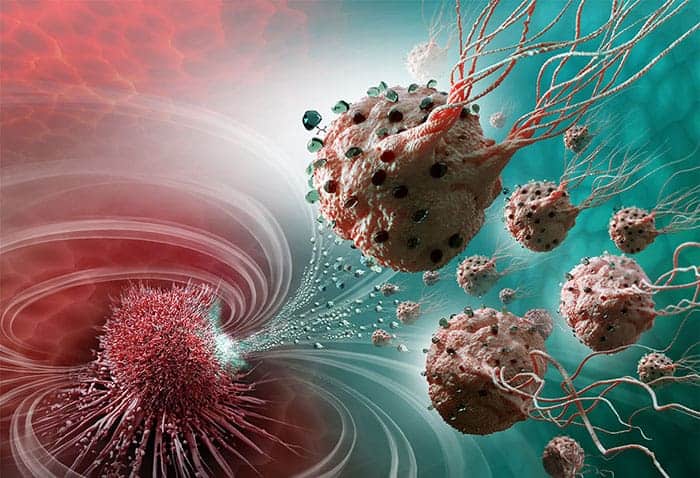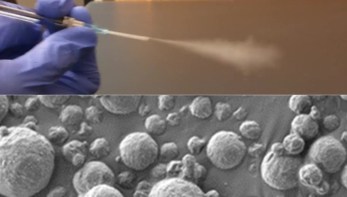
Cancer cells thrive by competing with normal cells for survival. Now, researchers are employing living bacteria to fight back against the cancer. This so-called bacteriotherapy – the deployment of bacteria to fight cancer – has sparked interest in the fields of immunotherapy and bioengineering.
While conventional ways of treating cancer with drugs can suffer from insufficient deposition of the therapeutic substance into tumours, the move towards bacteriotherapy ensures maximal deposition of therapeutic molecules into the tumour by genetic manipulation of the bacteria. This process, however, requires complex chemical reactions to increase the bacterial toxicity towards tumour cells.
Solving this challenge, scientists at the Japan Advanced Institute of Science and Technology (JAIST) report a straightforward system that enables living bacteria carrying nanoparticles to be used for photothermal cancer immunotherapy.
Living bacteria carry functionalized nanoparticles
A bacterium in a petri dish will not behave in the same way as a living bacterium in a cancer cell due to their different environments. Bacteria can deliver therapeutic signals to tumours, but when they are engineered to carry foreign molecules such as nanoparticles, the genetic stability of the engineered bacteria in the recipient cells must be carefully considered.
Senior author Eijiro Miyako explains that combining a non-pathogenic bacterium with a functional nanoparticle can help control immune response in host cells, while also maintaining its genetic stability. In developing this technology, he combined a non-toxic fluorescent dye, indocyanine green (ICG), with a solubilizing agent, Cremophor EL (CRE), to form ICG-CRE nanoparticles. Incubating the resultant nanoparticles with Bifidobacterium bifidum produced the modified bacteria.
Writing in Nano Letters, Miyako and co-author Sheethal Reghu describe several characteristics of the engineered bacteria, which have an average diameter of 100 nm and can be detected in cancer cells by using near infrared light to generate ICG fluorescence.
Photothermal cancer therapy
To deploy the nanoengineered bacteria for therapeutic use, Miyako and Reghu harnessed the potential of ICG to convert light into heat when irradiated by near infrared light. As such, the bacteria simultaneously serve as both a photothermal and a tracking agent.
The researchers tested the nanoengineered bacteria in a mouse model bearing colorectal cancer, as well as in human cancer cell lines, and found no severe toxicity in either. On the other hand, when they introduced natural bacteria into the cells, they observed higher cytotoxicity compared with the engineered counterpart.
Furthermore, they examined the killing capacity of the engineered bacteria on cancer cells after exposure to infrared radiation. This triggered a thermal effect from the ICG-dye that effectively eliminated the heat-sensitive cancer cells. The engineered bacteria also proved promising as a diagnostic tool, as traces of the ICG dye remained visible in the mouse tumour for three days after intra-tumoural injection.

Magnetic bacteria target hard-to-treat tumours
To assess the anticancer efficacy in the mouse model, the researchers injected solid tumours with either natural or engineered bacteria. After laser irradiation, the photothermal conversion of the engineered bacteria caused the solid tumours to disappear before the 45-day mark, with the help of immunological responses. They note that although tumour suppression was also seen with the natural bacteria treatment, its efficacy was lower than that of the engineered bacteria.
The diagnostic and therapeutic potential of the nanoengineered bacteria opens avenues for their use as future theranostic agents. The authors believe that by using up-to-date microbial technology, living bacteria can be exploited to trigger tumour suppression and contribute to the battle against cancer.



